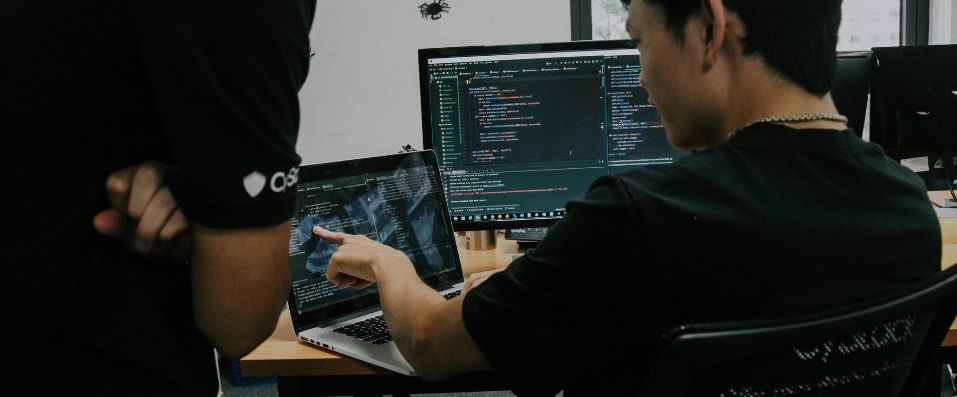Top 7 Blockchain Security Vulnerabilities Developers Still Miss in 2025
November 21, 2025 • César Daniel Barreto

Due to the ever-increasing adoption of blockchain technology, the risks and complexity of blockchain security have changed. The developers are facing greater responsibility now than ever before to make sure that their systems are not threatened.
The blockchain security vulnerabilities may negatively impact both economically and in privacy invasion, which may erode trust in a platform. However, even with the innovations and awareness, blockchain development still has concealed threats that most developers fail to understand.
This piece will examine the 7 weaknesses that developers continue to overlook when using blockchain systems and how developers can mitigate these blockchain security risks to create more secure platforms.
The Blockchain Security Vulnerabilities That Have Been Ignored
Although system security has become a focal point in the minds of blockchain developers, numerous vulnerabilities are still going undetected. Such unaddressed gaps may result in catastrophic breaches and abuse of security weaknesses in the crypto infrastructure. The following are the security threats that software developers should consider:
1. Vulnerability of Smart Contracts
Smart contracts are such a vital component of blockchain systems, which, however, pose a major security threat. Smart contract code can contain imperfections that may cause exploits that steal funds or destroy the integrity of the system, including logic errors, overflow, and insecure access controls.
- Mistake: Edge cases are sometimes neglected, or developers do not test smart contract code correctly before deployment.
- Solution: It is always necessary to carry out thorough testing with the help of tools such as Mythril or Oyente to identify issues. Periodic security audits are expected to be the norm.
2. Issues of the Private Key Management
The integrity of a blockchain system heavily depends on the secure management of private keys. One of the most widespread security problems is exposing assets to theft or loss because of improper storage or handling of private keys.
- Mistake: Developers can fail to provide strong encryption to store private keys or may not train the users on the best practices.
- Solution: Hardware wallets, multi-signature wallets, and correct encryption strategies are to be used to protect keys. The developers must always advise users on secure storage procedures.
3. Weak Consensus Protocol Implementation
A blockchain leans heavily on its consensus mechanism for security. When that mechanism is poorly set up or only half-understood, the entire system can become vulnerable. Problems like 51 percent attacks, where a single group takes control of the network’s consensus, are real risks when the protocol is not chosen or configured with care.
- Mistake: Developers sometimes pick a consensus method without fully grasping what the system requires or what dangers come with that choice. It happens more often than people expect.
- Solution: The safer approach is to match the consensus protocol to the specific needs of the blockchain. It should fit the system’s design and provide strong, dependable protection.
How to Handle Security Gaps in Blockchain Systems
When building the blockchain systems, engaging an expert blockchain development company can help a great deal in minimizing the chances of exposure to vulnerabilities. Such a company provides quality software services and offers expert advice on best practices to ensure the security of blockchain. Their developers operate on best practices of blockchain clean code, meaning that all projects are scalable, maintainable and high-performance.
Companies that work with a blockchain development agency can ensure that every aspect of blockchain security, including smart contract audits, private key management, and consensus mechanisms, is examined and adjusted to provide maximum protection.
4. Reentrancy Attacks
Reentrancy attacks are a sort of vulnerability that happens when a contract makes an external contract call and that external contract makes a call back to the original contract before the initial call can be finalized. This may result in unauthorized fund withdrawals or in the manipulation of contract logic.
- Mistake: Developers do not secure their smart contracts against reentrancy, in particular, in decentralized finance (DeFi) apps.
- Solution: Use check-effects-interactions patterns to prevent reentrancy attacks. These problems can be avoided using Solidity’s ReentrancyGuard.
5. Inadequate Data Validation
Blockchain systems typically rely on external data sources, and failing to properly validate this data can lead to issues. The blockchain system can be corrupted with invalid or malicious data, resulting in wrong decisions or loss of money.
- Mistake: The system can be vulnerable to attacks when it ignores proper validation of data prior to processing external inputs.
- Solution: To guarantee the validation of only the correct and authorized data, introduce strong data validation measures, including input sanitization and validation of external sources of data.
6. Absence of Formal Check of Critical Code
Formal verification is a mathematical methodology of establishing that the code works as intended. Failure by developers to perform this step can lead to the undetected presence of subtle bugs or vulnerabilities that could have otherwise been identified by formal means, particularly within complex systems.
- Mistake: Formal verification can be neglected because of time limitations or incompetence.
- Solution: Formal verification tools and processes can be used to test critical code rigorously (in particular, smart contracts and consensus algorithms) to make sure that the system behaves as desired in all scenarios.
7. Insecure Oracles
External information (asset price, weather, etc.) is fed into the blockchain using oracles. In case the oracle service is attacked, there is a risk of false or tampered information entering the blockchain system and causing wrongful or malicious actions.
- Mistake: Relying upon untrusted or centralized oracles without relevant security precautions.
- Solution: Adopt decentralized oracle networks and make sure that oracles are made reliable and accurate. These risks can be avoided with the help of trusted services such as Chainlink.
Winning Strategies Against Blockchain Security Vulnerabilities
The security risks of blockchains can only be mitigated in a multi-layered manner, starting with data security and the architecture of blockchain systems, through testing and codebase auditing. Developers are recommended to implement the best security practices and keep track of and revise their safety measures to keep pace with the changes in threats.
- Periodic audits: It has been documented that regular code audit may help detect vulnerability before it is taken advantage of, and it is also known that organizations that undergo regular security evaluation are able to lower the possibility of breach by at least 50 percent, showing that routine audits can significantly enhance the security of blockchains. This ensures mistakes are addressed at an early stage, before they escalate into costly, hard-to-curb exploits.
- Decentralization: A decentralized architecture helps distribute risk, making it difficult to attack a single point of failure, and a distributed system has demonstrated its ability to remain functional even in the face of localized node failures. This structural resilience holds that even when one section of the network is damaged, the whole system can still run without being affected and the effects as a result of possible attacks will be greatly diminished.
Conclusion
Since blockchain technology is expected to continue evolving in 2025, developers need to keep security vulnerabilities in mind. The latter can create safer systems against increased threat numbers by fixing the most frequent problems, such as improper smart contract implementation, insecure key management, and weak consensus protocols.
By partnering with a professional software development company, businesses can ensure their systems are developed with security considerations in place from the outset. With active measures to combat these hidden dangers and continual enhancements to blockchain security, organisations will be able to secure their resources and earn the confidence of their consumers in the fast-evolving technological environment.
Moreover, the flows of the data into your blockchain system and the finalization of the transactions must be smooth and controlled, which will also contribute greatly to protecting the loopholes that can cause vulnerabilities.

César Daniel Barreto
César Daniel Barreto is an esteemed cybersecurity writer and expert, known for his in-depth knowledge and ability to simplify complex cyber security topics. With extensive experience in network security and data protection, he regularly contributes insightful articles and analysis on the latest cybersecurity trends, educating both professionals and the public.